

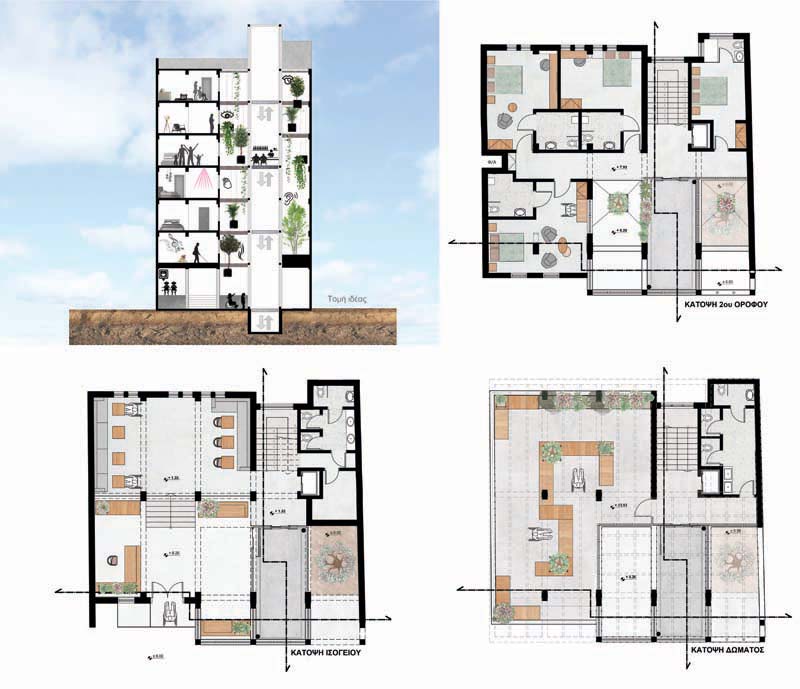

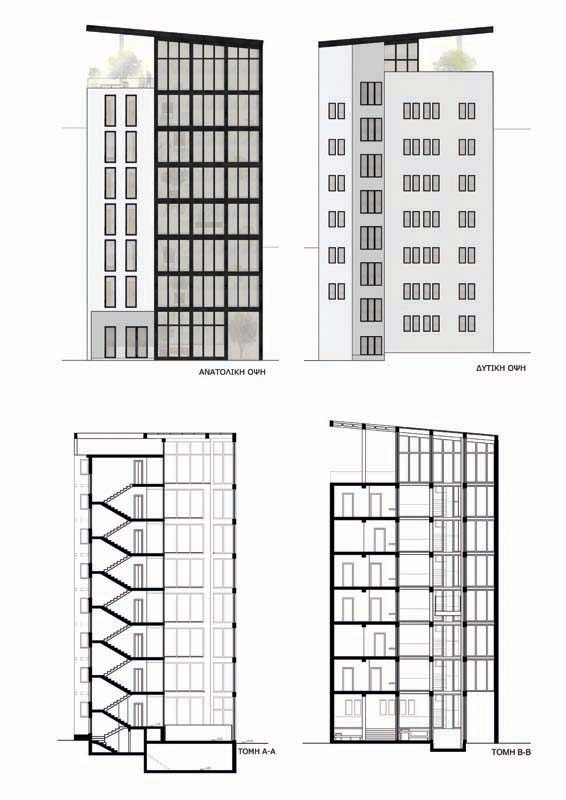

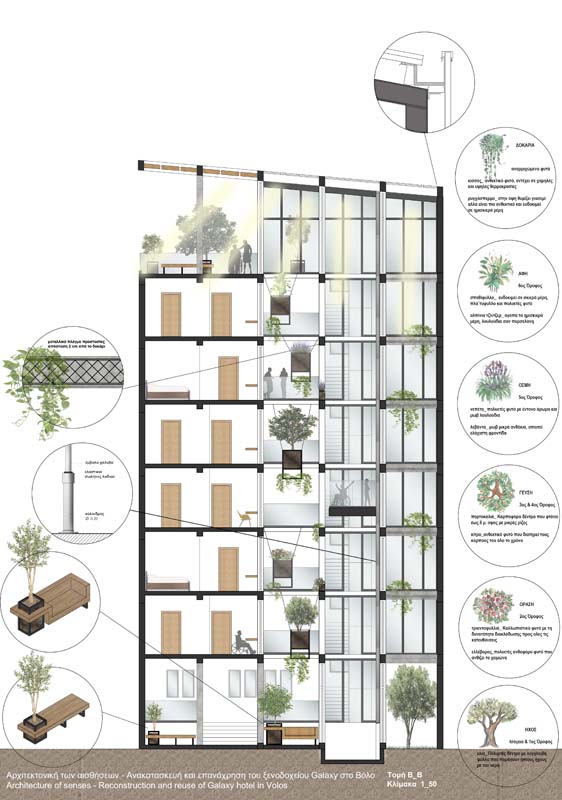



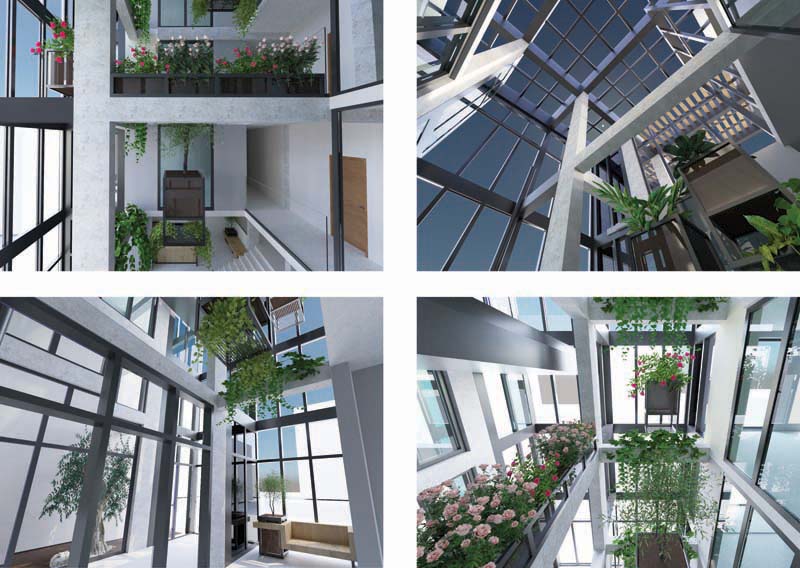

The concept of our thesis was the outcome of our personal experiences and our personal involvement with structures in Volos. It all started with a walk at Volos seaside, during which we approached the Galaxy Hotel where we met some engineers talking to the hotel owners. The hotel had stopped operating for over 12 years and the image of the interior was an image of sadness and sudden abandonment. There was still coffee in the cups, open magazines on the tables, the breakfast buffet was ready but abandoned, dead and alive birds everywhere, meticulously made beds, folded towels and still throwing curtains.
Everything in place, as if calling our senses to feel the hospitality. The furniture and equipment of the hotel would be transferred to landfills, but with our intervention and consultation with the owners they were transferred to public benefit institutions in Volos. Our active participation in the donation process, brought us close to people with limited kinetik and sensory abilities.
We decided to totally redesign and create a five senses awakening hotel, in a way that each and every guest would feel and accept this hospitality invitation. We chose this very building of Galaxy hotel, which was designed and built in 1969, as a six-floor construction with dense columns and beams. The first challenge was to let the space breathe and then to offer the visitor the opportunity to receive different and intense stimulations.
Seductive gardens with internal openings and a spacious open platform for vertical movement took the place of large quantities of old concrete which was removed. The gardens are made up of many different types of rustling with the wind plants that provoke all five senses. Plants that attract or repel the touch, whose smell is etching in the memory, plants beautiful and plants that challenge you to taste them.
Supervisor: Paniyiris Costis
Reference Number: 920
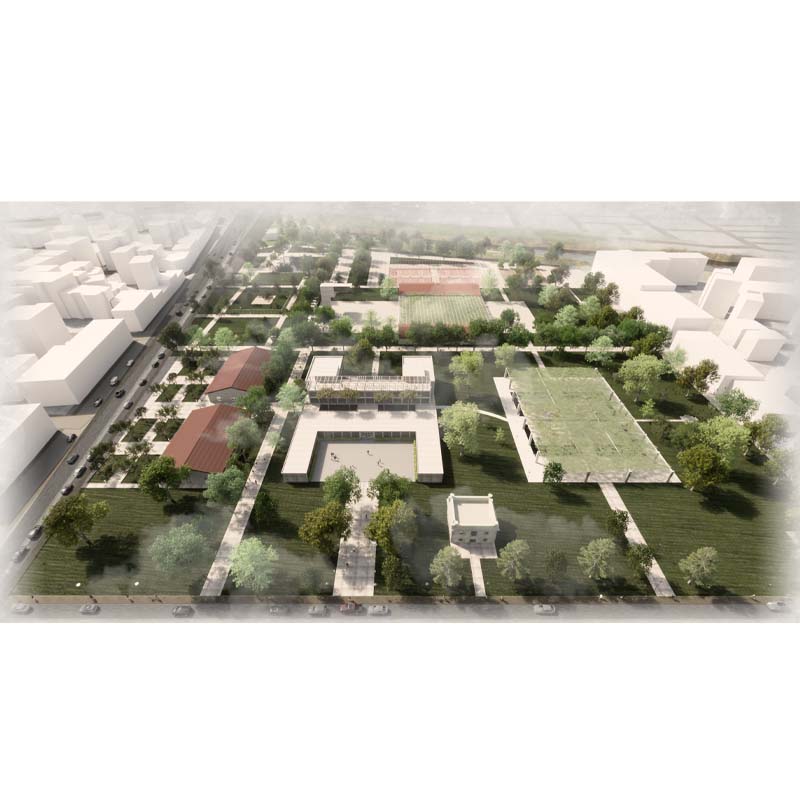

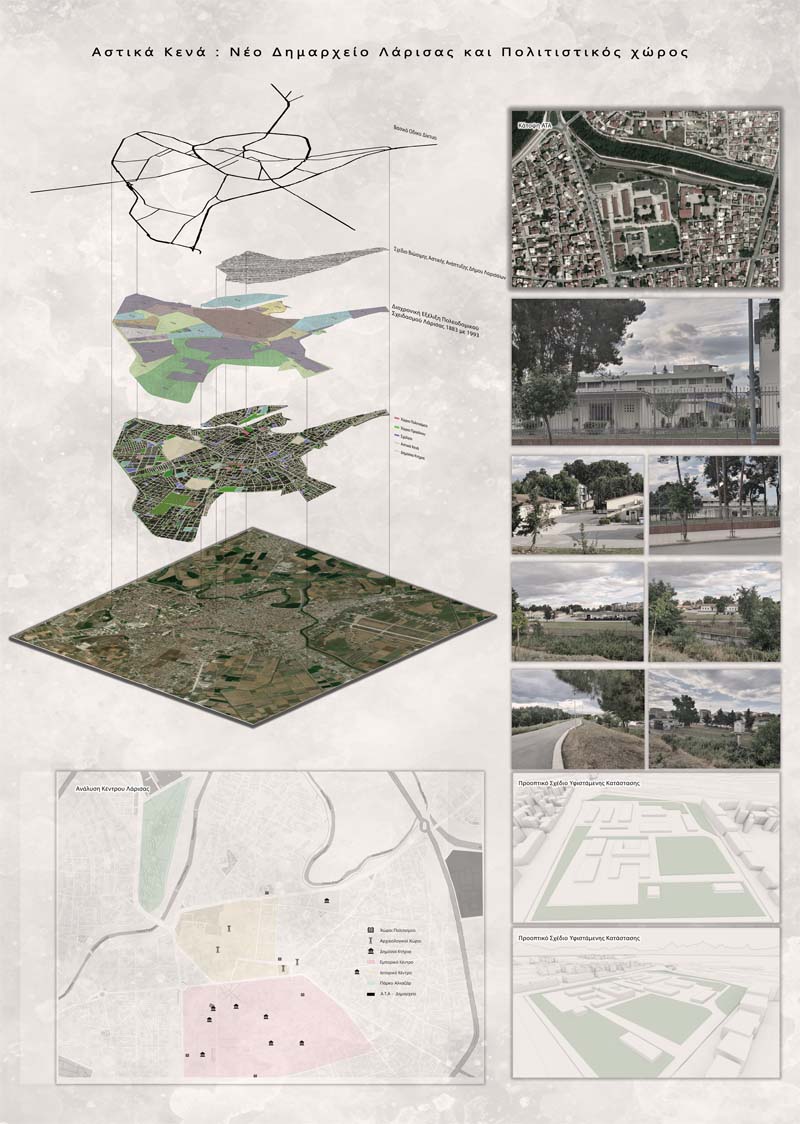

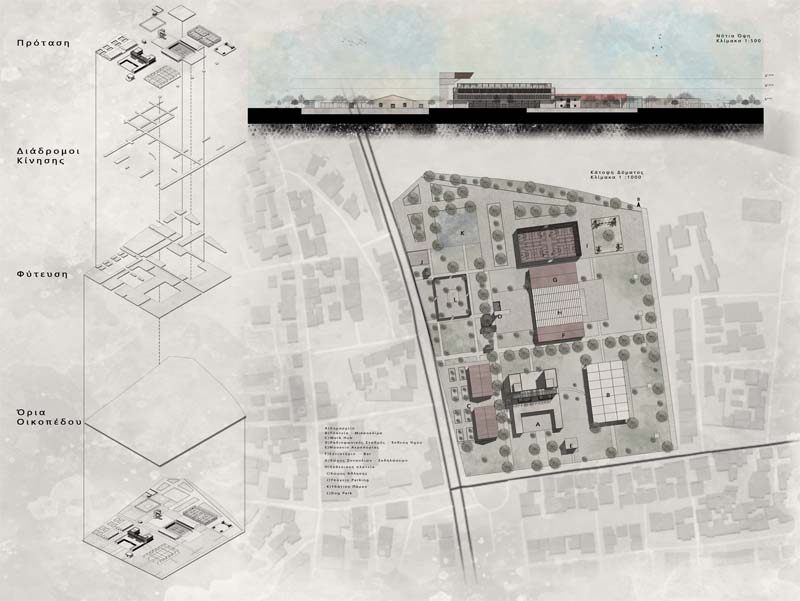

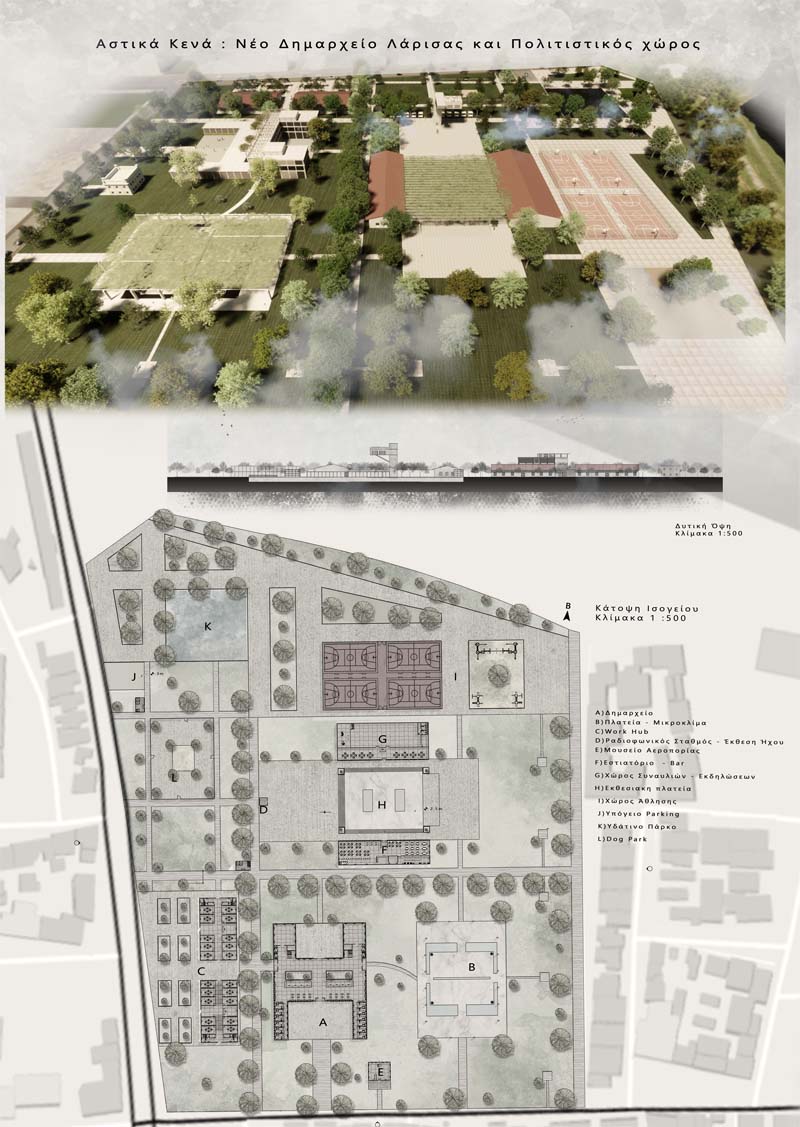

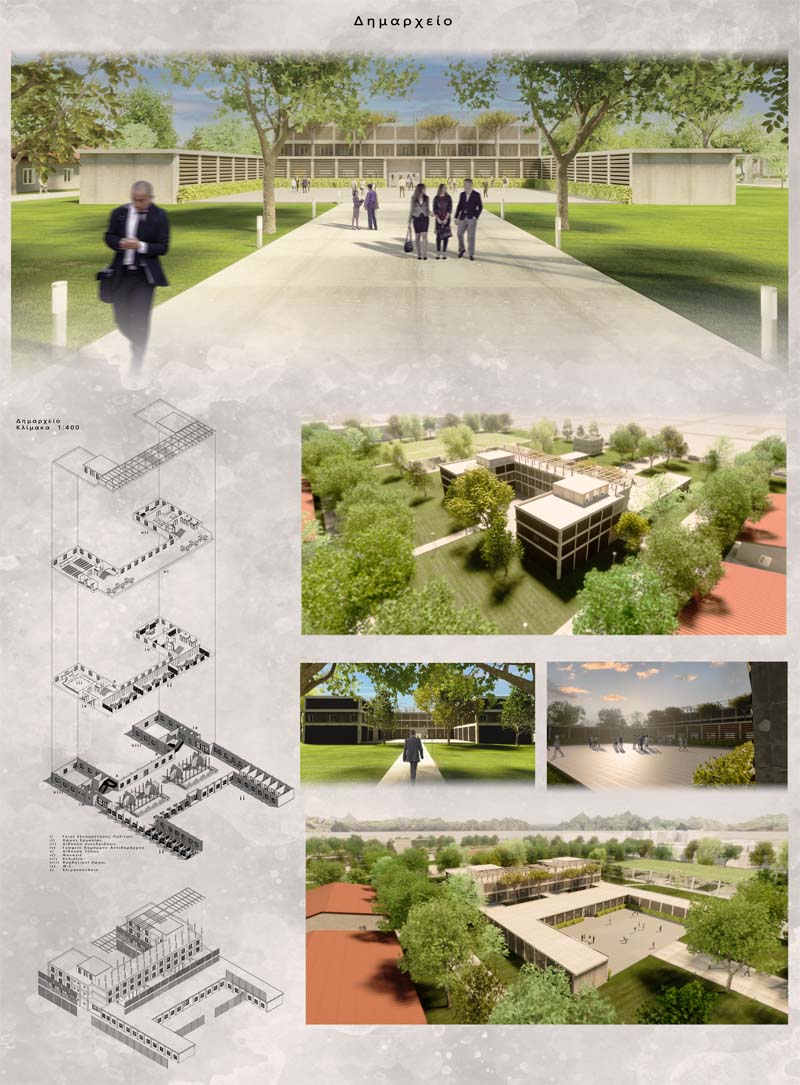

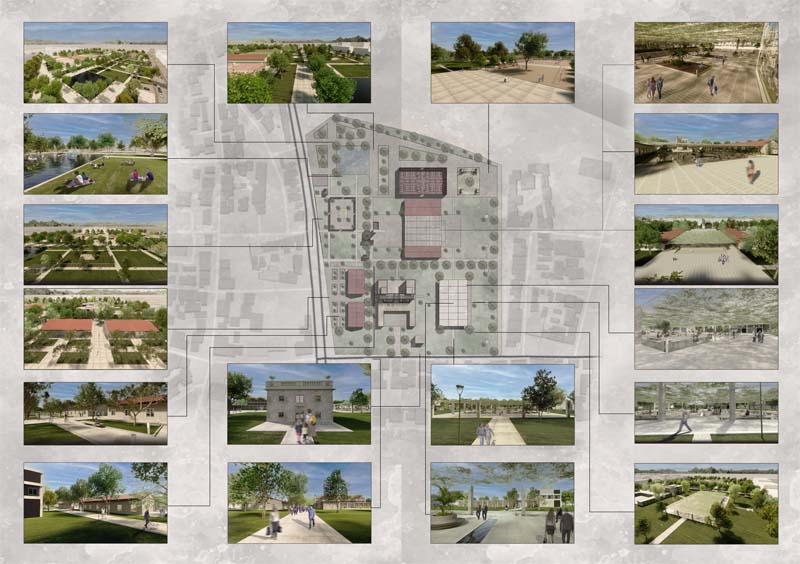

The rapid population increase of Greek cities since the 20th century (refugee populations, urbanization, development of industrial centers) led to repeated expansions of city limits. But, this fragmented planning in city zoning, which was not incorporated into wider town planning regulations, resulted in city expansions with "inherited" issues.
One of the aforementioned issues is the confinement of large areas that cannot be re-planned, within the urban grid, while maintaining their original use (military camps, industrial spaces etc). These urban gaps, not only disrupt the cohesion of the urban grid, but burden the city with their respective use (traffic congestion, aesthetic pollution, carbon footprint).
Another issue is the confinement of City administrative Services within the commercial zone of each city. Such services were developed in these zones under past conventions, but are now suffocating among the intense commercial and entertainment activities of the city, due to major issues related to accessibility to the services as well as traffic congestion as a direct impact of their location.
In the present dissertation, we are proposing the re-utilization of the military camp that hosts the Headquarters of Tactical Airforce in Larissa into a City Hall for the city and the creation of a cultural space adjacent to urban green areas.
Supervisor: Papadopoulos Spiros
Reference Number: 958
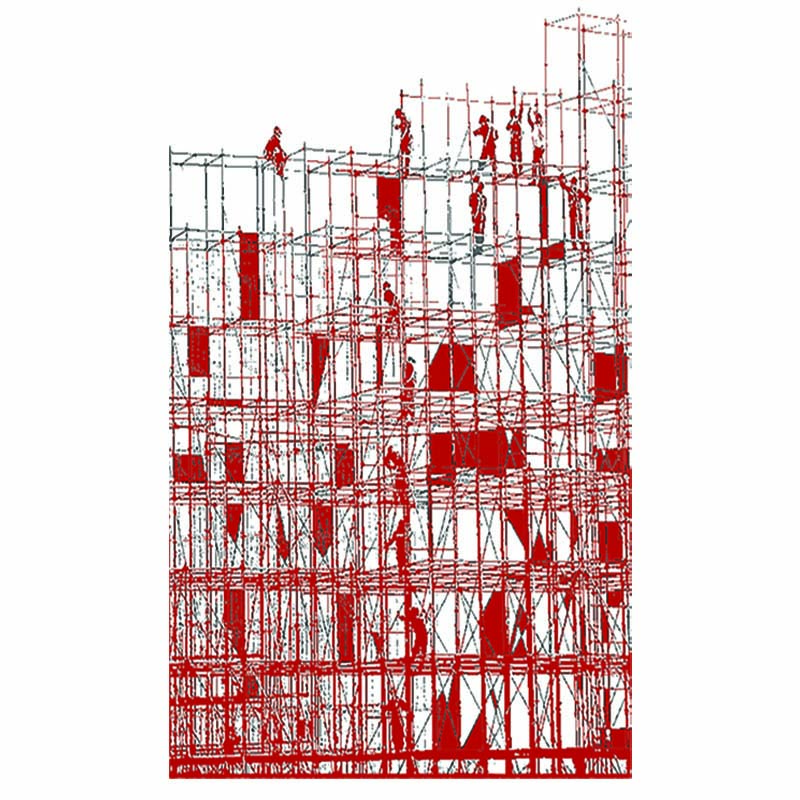

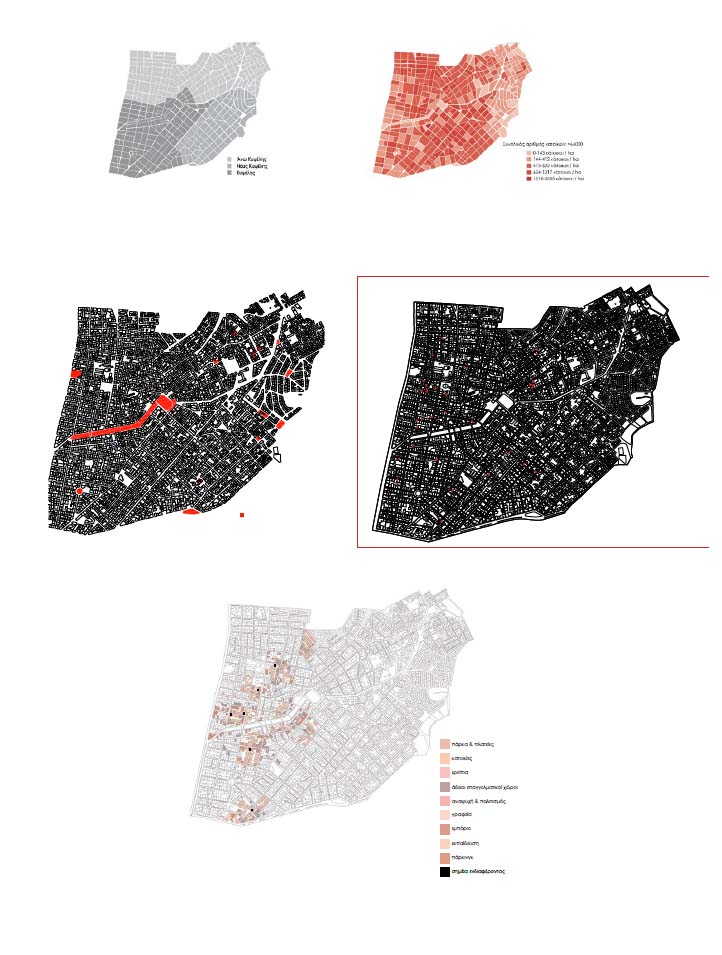

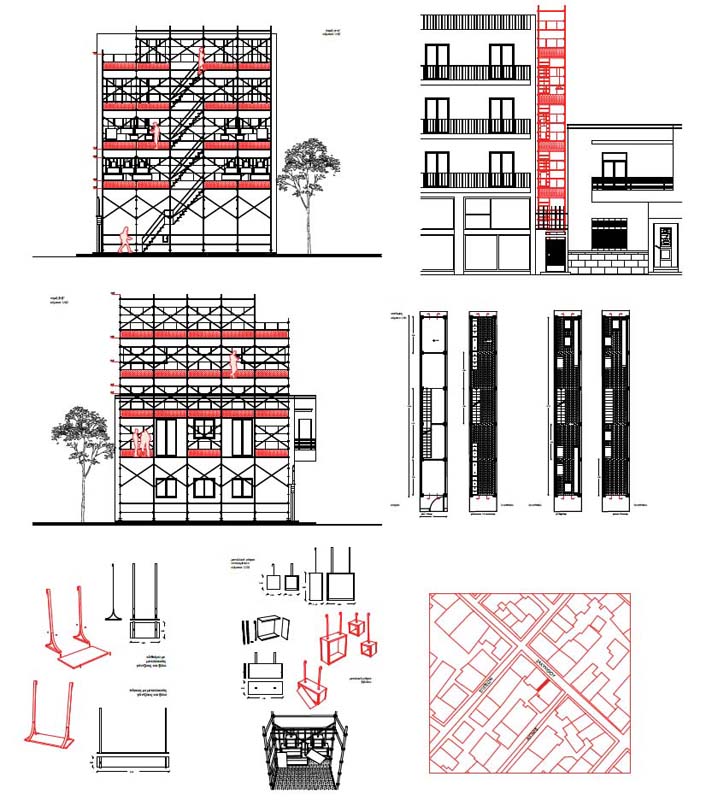

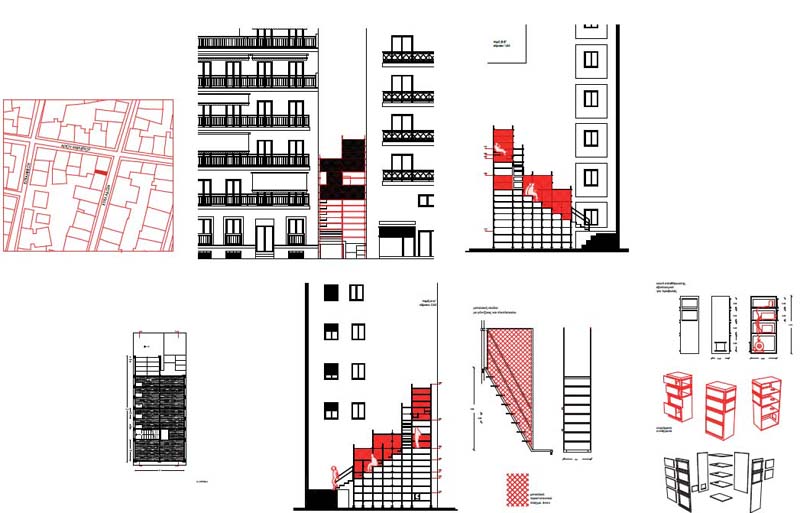

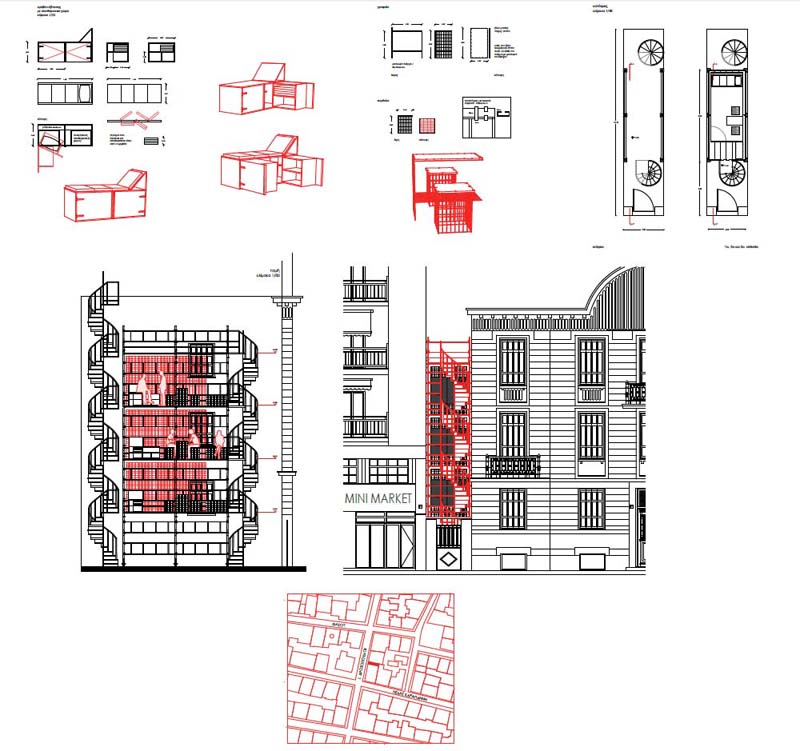

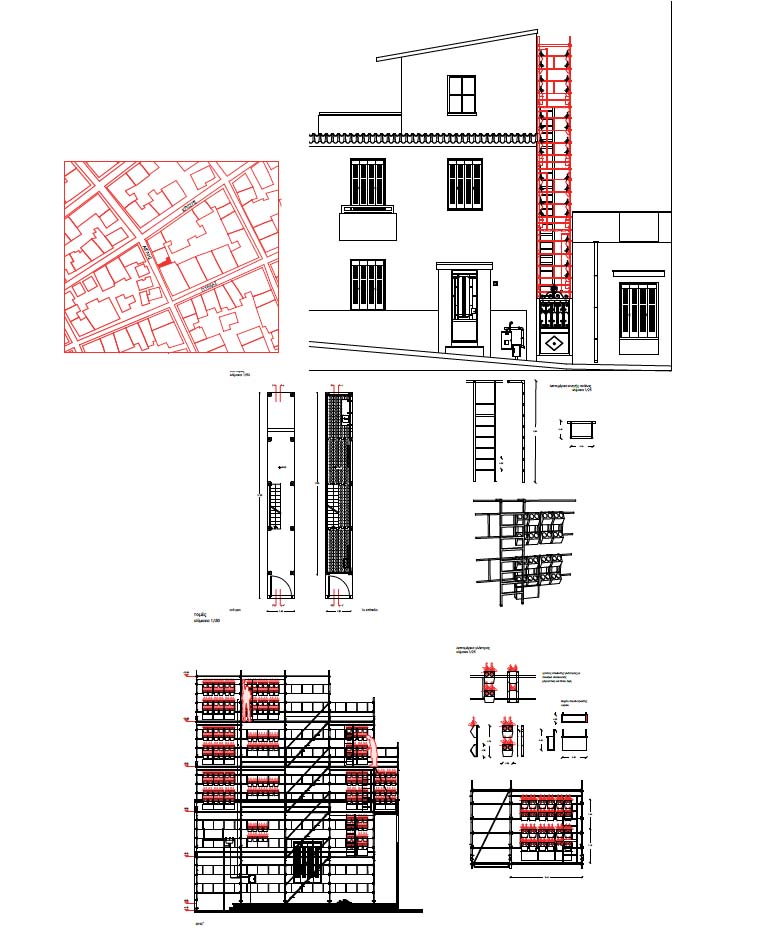

This thesis is a scenario of a "parasitic" strategy, which aims to exploit the few vacant spaces left in densely populated areas. Kypseli in Athens was chosen as the study area, due to the large number of residents it concentrates and its dense building environment. Observing the area, between the narrow streets and the very tall apartment buildings, there are "cracks" appearing in some places, which are gaps left between buildings. Through the survey, it was observed that these places have been abandoned by their owners and now have the function of garbage dumps. We believe that these urban "cracks" are places that could be reactivated and accommodate functions for the benefit of residents. By placing scaffoldings and objects applied to them, it would allow these spaces to be used in a reversible way and create additional spaces that might "relieve" the area. Each scaffolding has a different use with a public character and is placed in one of these places. In this way, another network of movement and communication will be formed for those who need it. The logic of this "invasion" is based on the way parasites act, where through conflict with other organisms, they are driving the whole system to symbiosis and then co-evolution.
Supervisor: Papadopoulos Spiros
Reference Number: 953
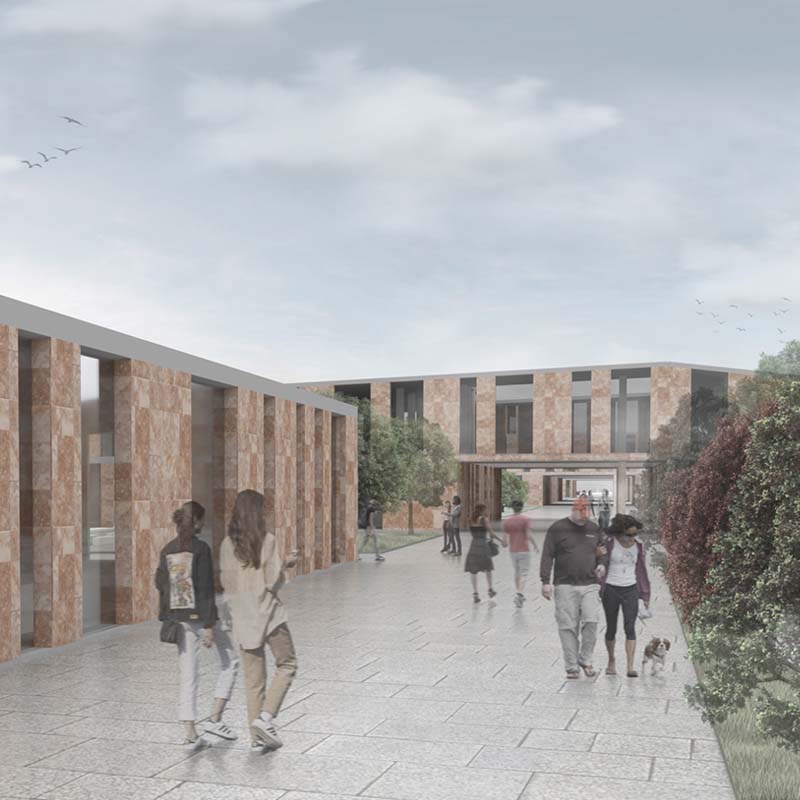

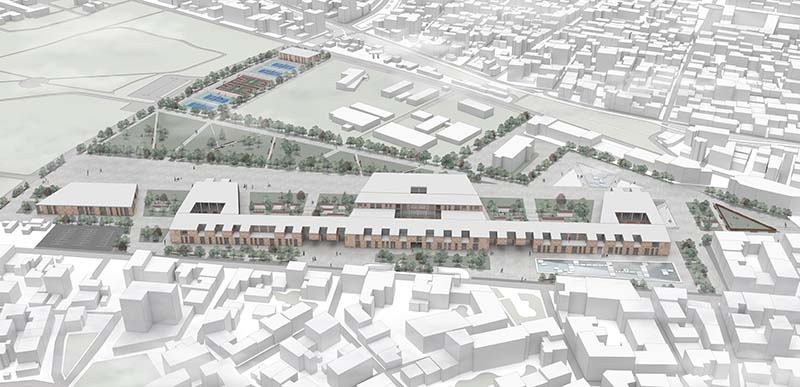

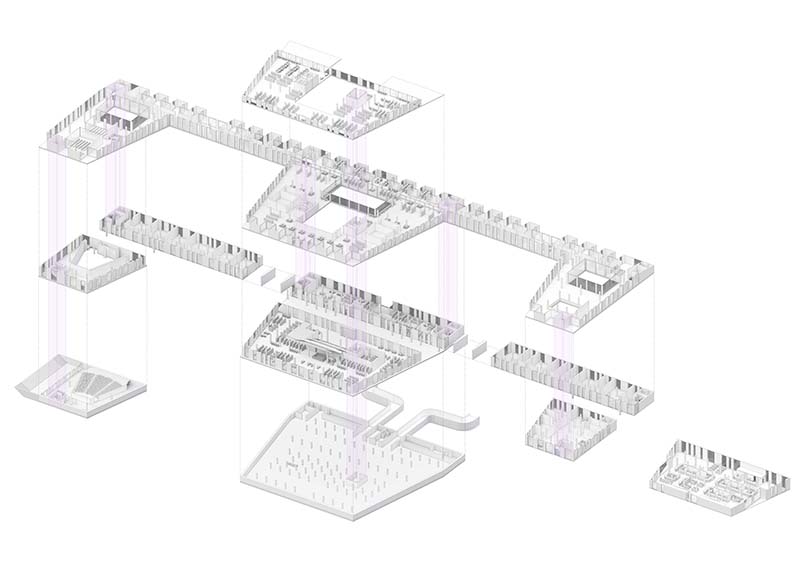

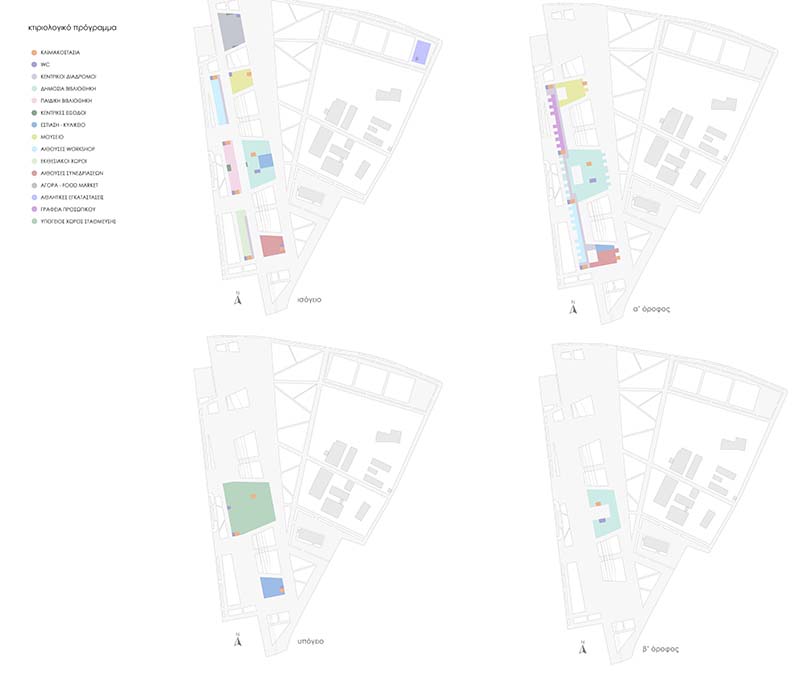

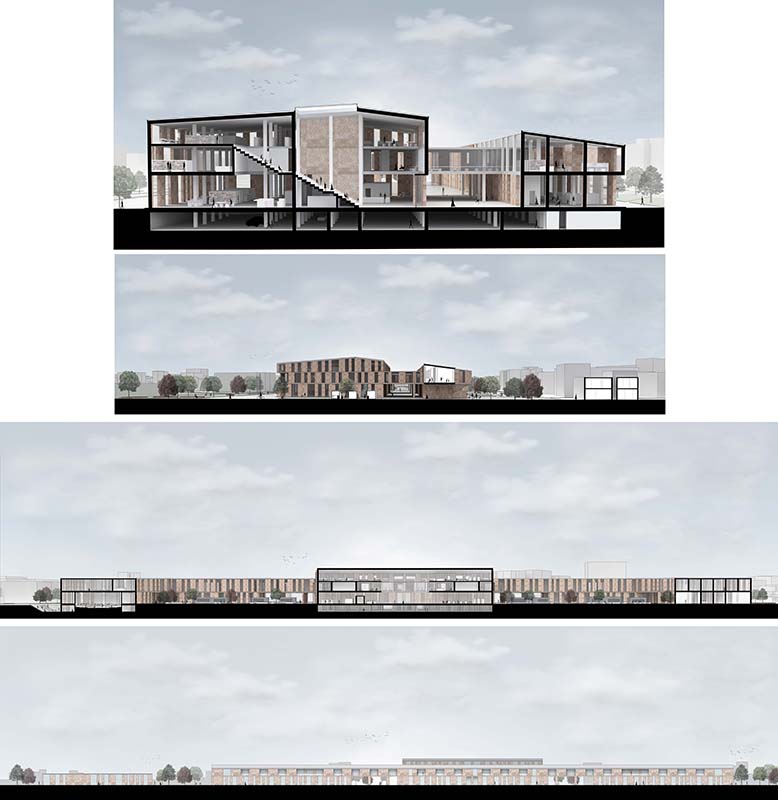

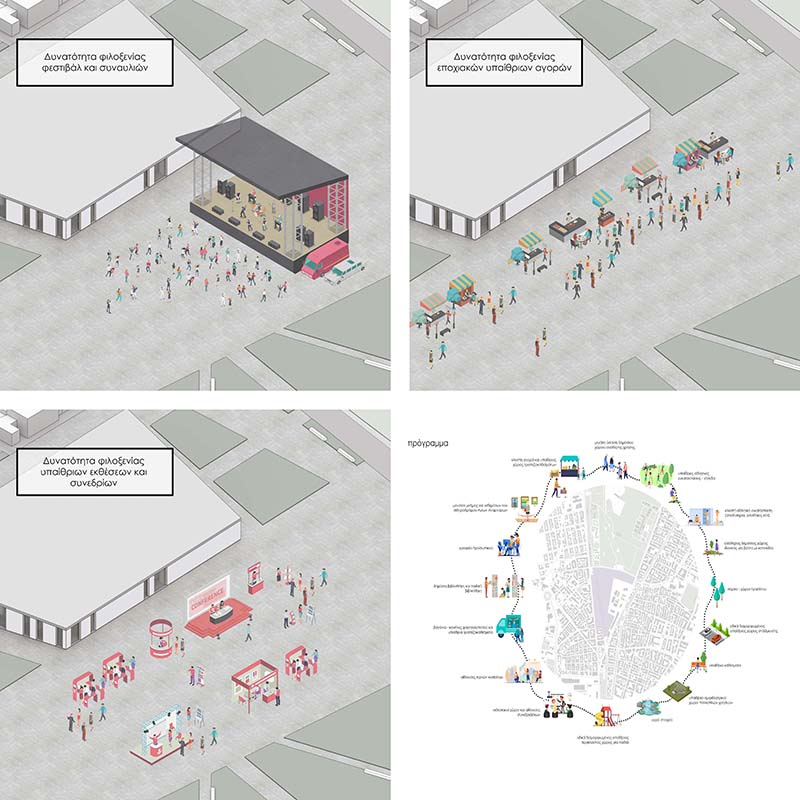

In this Architecture Diploma Thesis, the urban development and re-creation of the area surrounding the Old Railway Station of Ag. Anargyron is being presented and analyzed thoroughly.
To be more specific, this used to be an area with a lot of traffic and locomotion, as it constituted a central passage for the public railway system, with the Railway Station of Ag. Anargyron being located there. The station was interconnected with two other railway lines, those of Piraeus - Patras and Lavriou - Ag. Anargyron. After the last operating year of the station in 2007, the area was abandoned and remained unexploited till this day.
This abandoned area of 75,036 m2 has been a point of interest since there are prospects of creating a remarkable urban space. Considering the fact that the area is part of the wider region of the western district of Athens where social and cultural infrastructures are minimal to non-existent, the Urban Regeneration proposal aims to upgrade the area.
Therefore, the concept that is being proposed during this project combines a series of social and cultural activities such as art, education, sports, culture, recreation and commerce.
More specifically, the redevelopment project includes several constructions. Firstly, 1. the central and largest building houses two public libraries (including a children’s one), a museum space for the old railway station, art workshop rooms, meeting rooms and other specially designed areas for hosting exhibitions. A smaller building accommodates a food market and, finally, another building provides additional space used exclusively for sports facilities.
The interventions in the surrounding area are made in such a way that their design follows the triangular geometry of the plot and at the same time maintain a harmonious connection to the area of interest. Thus, a large public square and three smaller ones, a leisure park, outdoor sports facilities, recreation areas and triangular-shaped dining spaces are created in conjunction with water features in the development of the study area.
Supervisor: Micocci Fabiano
Reference Number: 970
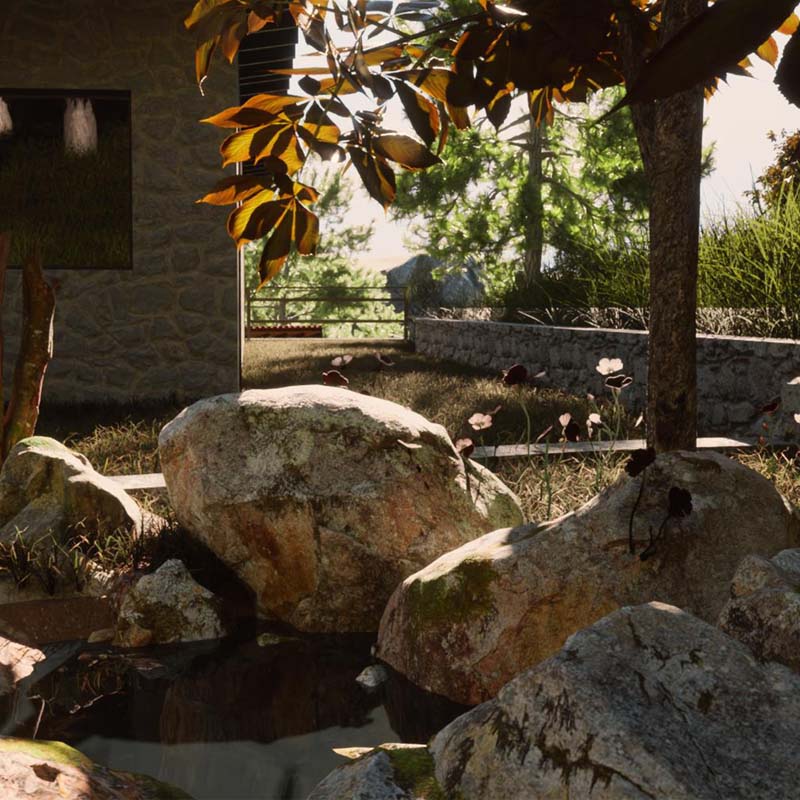

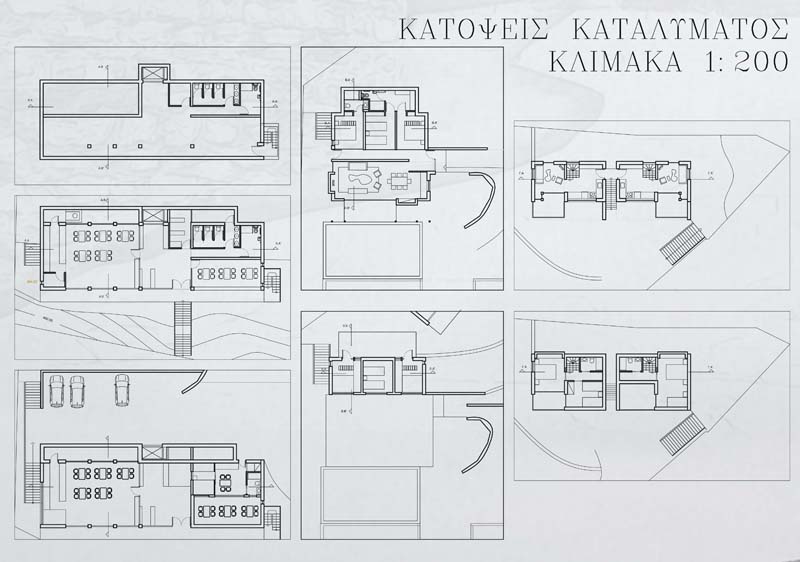

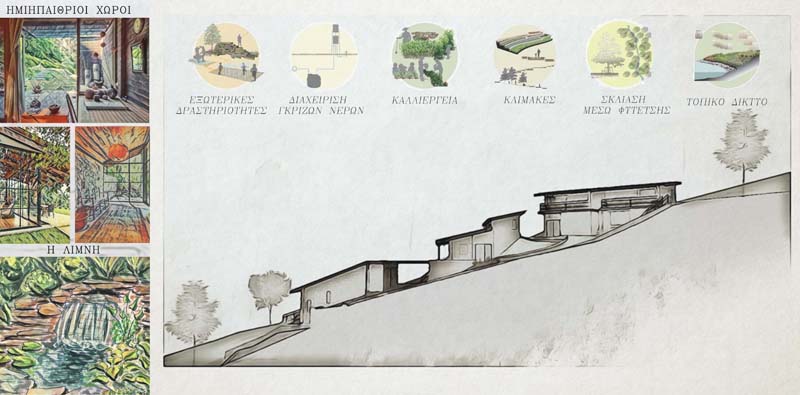

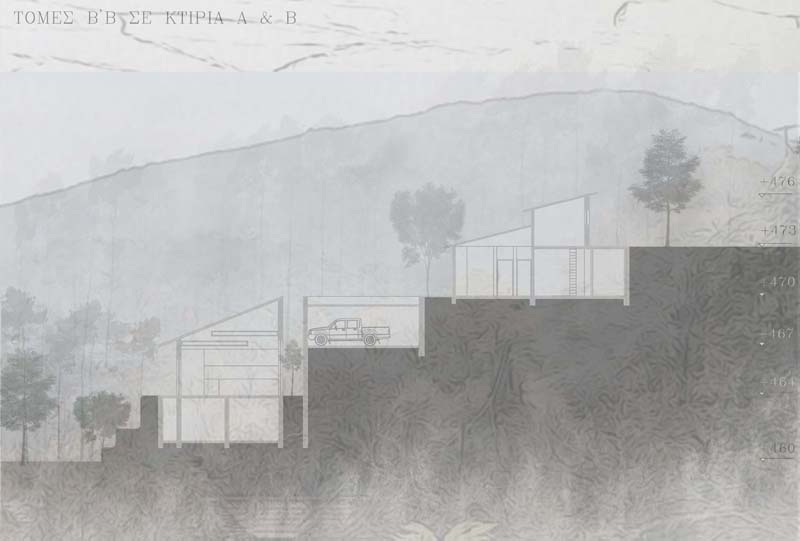

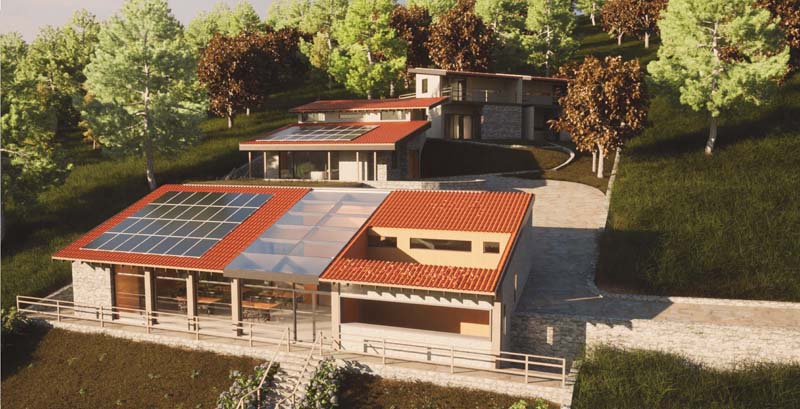

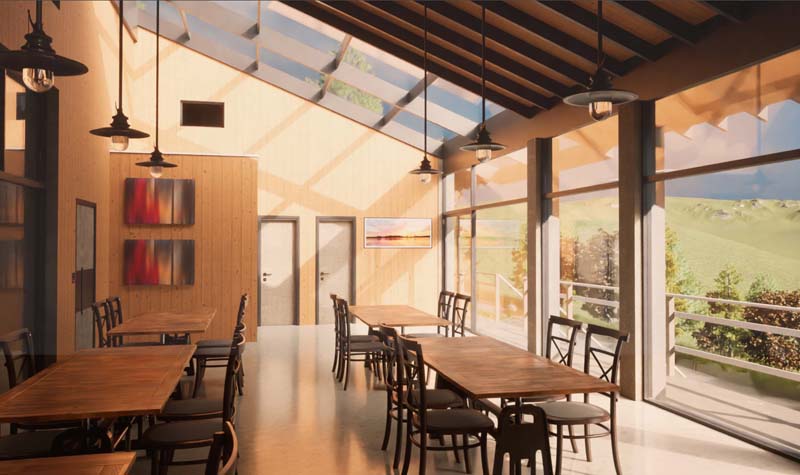

The present dissertation entitled "Sustainable design for eco-tourism accommodation in Sklithros based on the principles of the circular economy" aims to investigate the design of an ecotourism lodge, based on the principles of the Circular Economy, as a center of hospitality, rest and the facilitation of “green” activities and a hub of experiential learning and sustainable development with respect for the environment. The community department of Sklithros Larissa includes the settlement of Rakopotamos next to the Aegean and the homonymous settlement located in the Natura area, in the forest, on the east side of Mavrovouni. The individual objectives for achieving the purpose are the investigation and determination of the architectural form of the project, is the number, type and location of the buildings that constitute the lodge, the research of the circular economy practices for the construction and operation of the lodge and its practices and the assessment of their viability, and its two-dimensional and three-dimensional representation.
Included in the dissertation: the description of the plot, the settlement, the area, and the review of the environmental, economic, and social information related to the implementation of the purpose. For the implementation of the objectives, draft models and initial 2d geometries of the desired typical architectural forms of buildings as ecotourism accommodations were constructed and placed successively in alternative positions and combinations in sloping topography. Among the alternative design forms, the architectural ensemble that best meets the basic building criteria of coverage, construction, orientation, view and ease of access was chosen. A bibliographic review was conducted on the architecture, construction and operation of tourist accommodations based on the business model of the circular economy. Construction and operational options were researched and evaluated based on the circular economy model in terms of their viability for this specific project. The proposed design of the selected architectural ensemble was designed in 2 and 3 dimensions in relation to its location on the plot.
Supervisor: Kotionis Zissis
Reference Number: 922
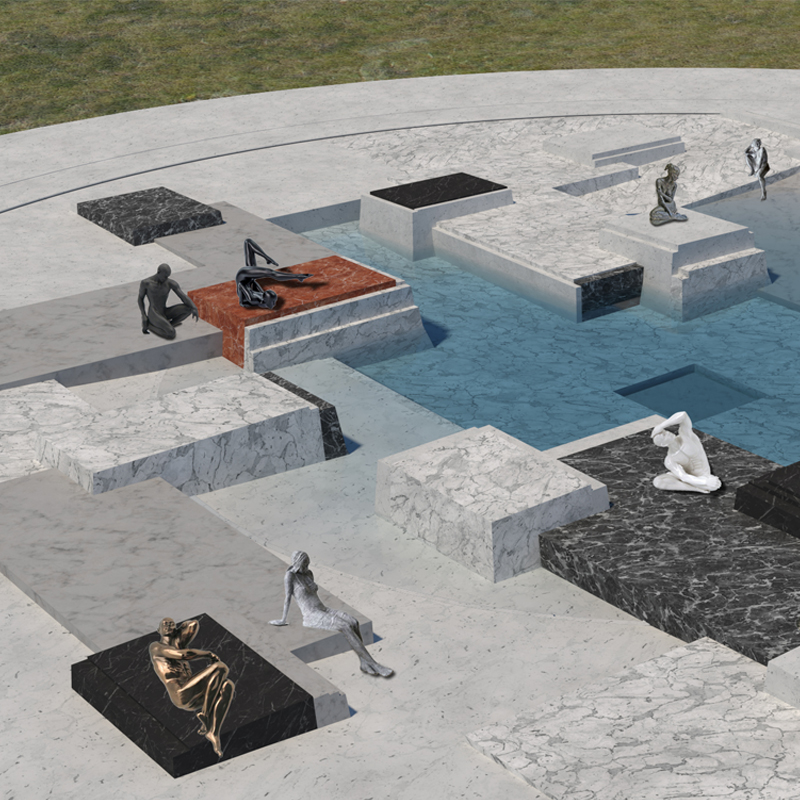

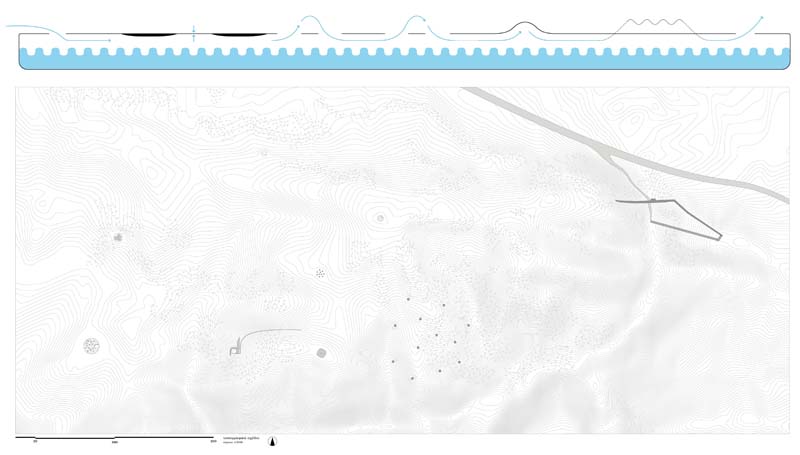

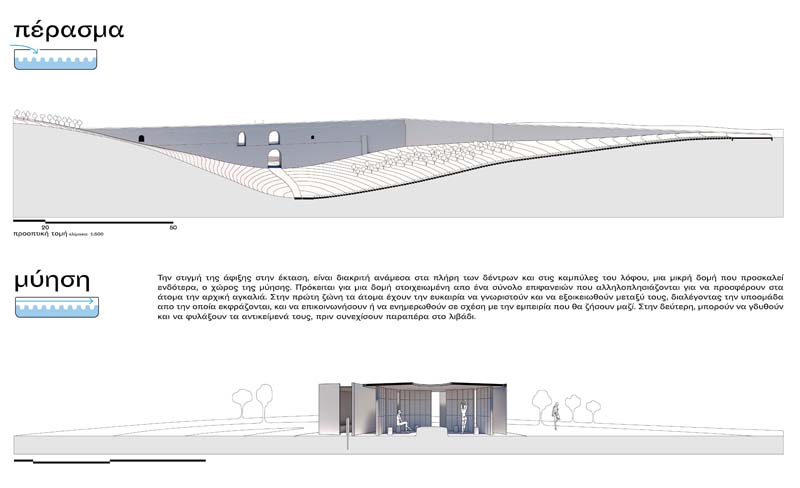

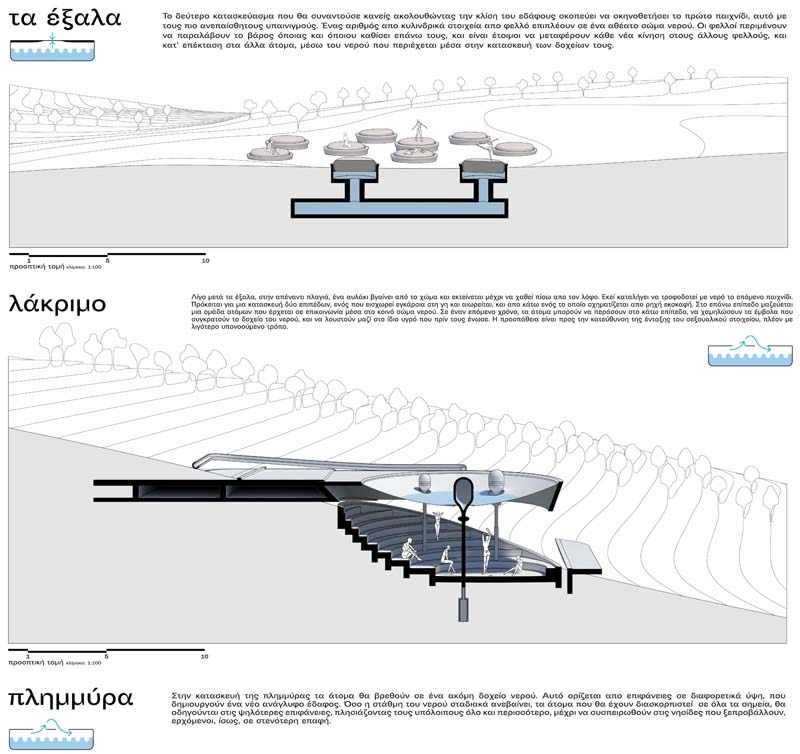

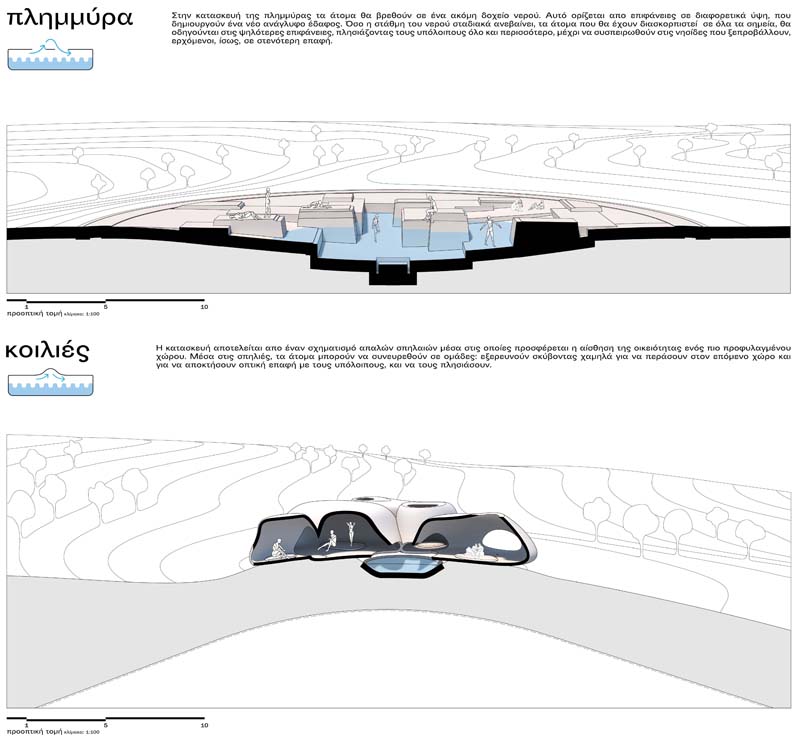



Nuditérre: On the Grounds of Sex consists of an endeavour to encourage, in physical space, a realization of experiential release from predetermined meanings that space occupies in the collective mind. A reference is made to the concept of deterritorialization, in terms of liberation from "fixed correlations contained in a body, while at the same time, it is exposed to new organisms. (D&G 1987: 88). This desire is manifested through the state of nudity and the act of removing clothing, which is understood as a break from visual identity and the mental connections that characterize it. A series of structures are introduced to the topography of a green meadow, itself a transcendent realm, surrounded by arrays of trees and the views of nearby mountains. The aim is for the synthesis to facilitate erotic playfulness and the act of sex, while individuals are experiencing and getting to know each other, roam freely, discover their own spatial narrative, within their parallel sphere of the familiar.
Supervisor: Mitroulias Giorgos
Reference Number: 921
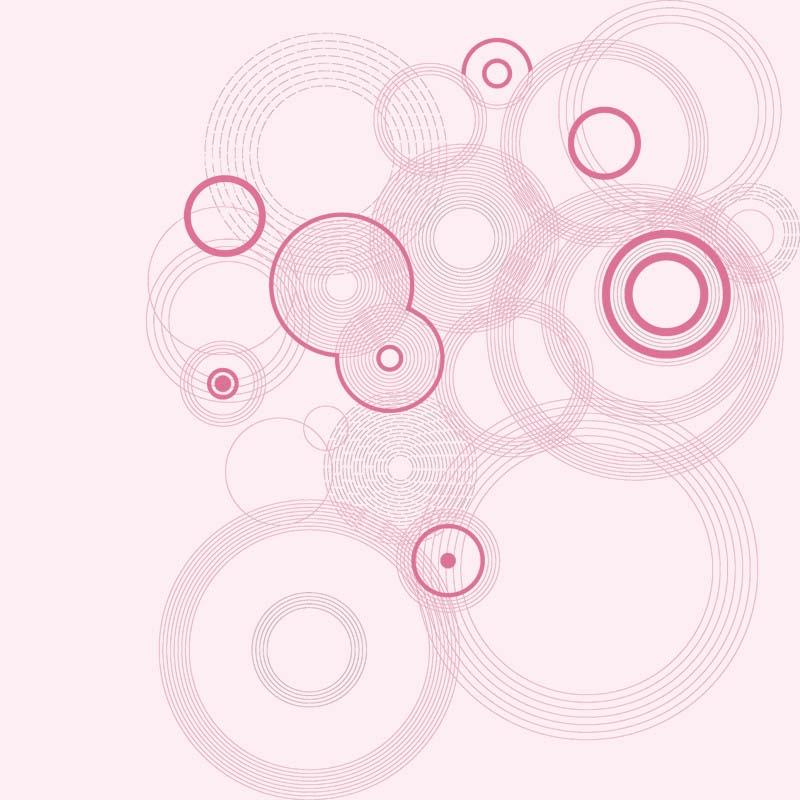

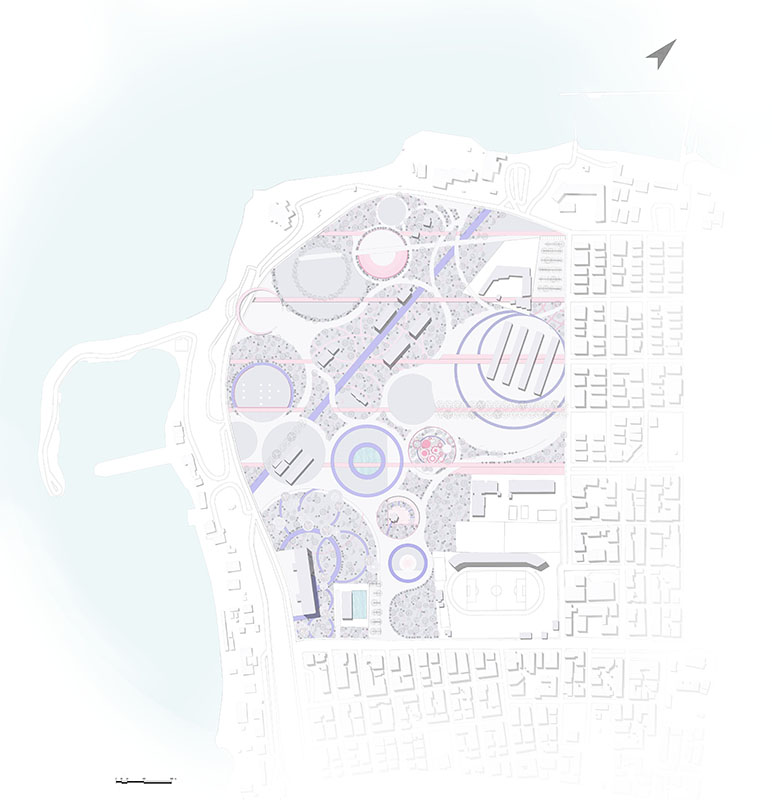

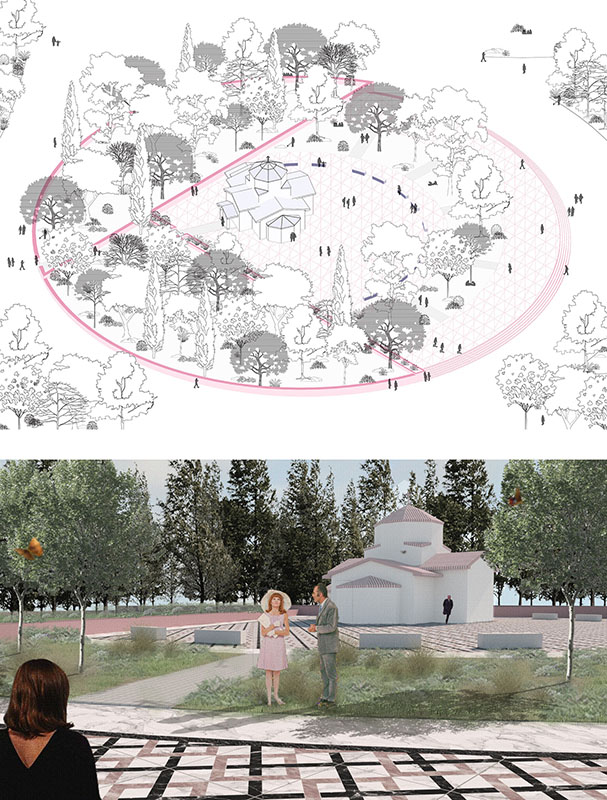

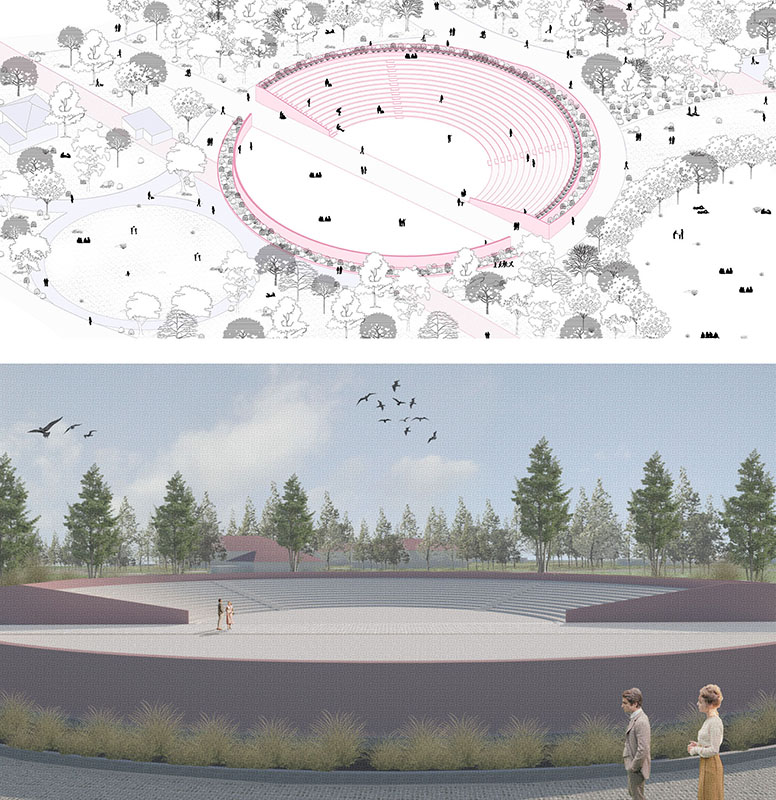

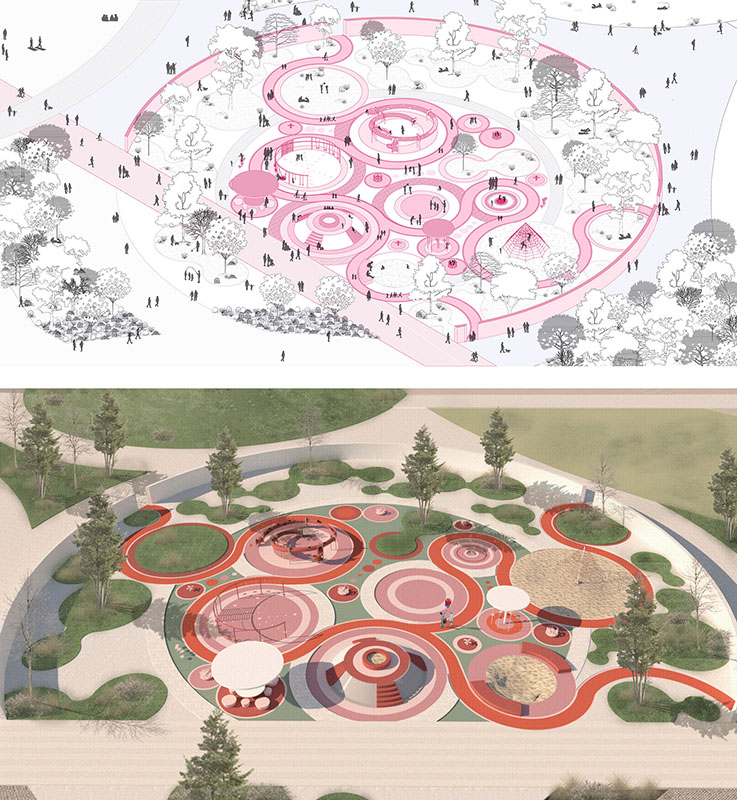

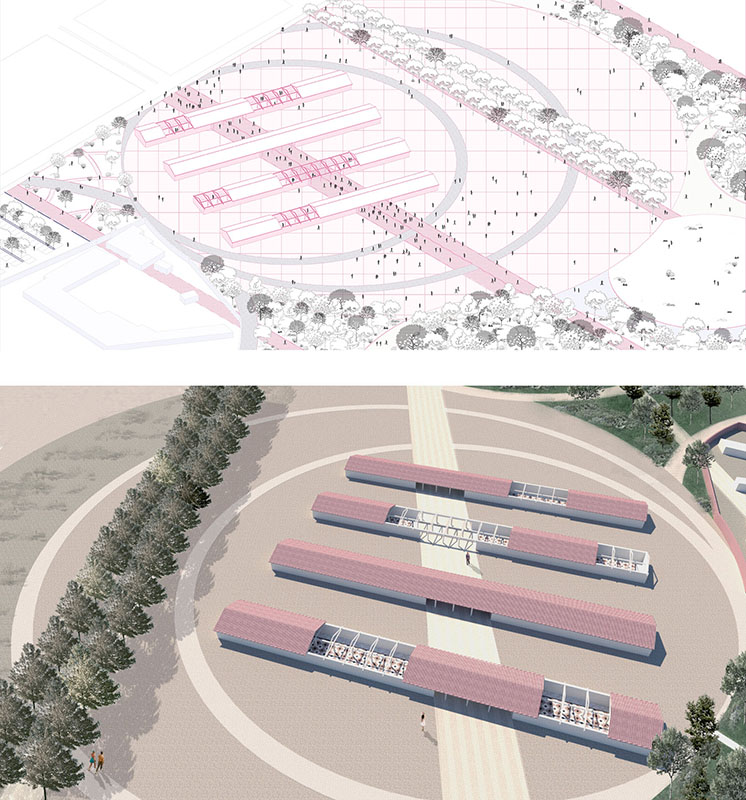

This thesis focuses on the case of the former military base Kodra in Thessaloniki, its redevelopment targets to transform into an urban park with innovative recreational and training facilities. At a short distance from the city center, Kodra became over time the most characteristic part of the municipality of Kalamaria. The conditions that people have to deal with when living in urban environments has shifted significantly. At the same time however, despite all the changes in the way of living, the need for joy and relaxation remains as a fundamental human need, maybe even stronger than before. The proposal for the transformation of the ex-military camp Kodra into a park identifies that need as a real, existing condition and tries to create a park that aims at the creation of spaces and events that will be able to provide joy to the residents of Kalamaria and the surrounding areas, through a dense green condition within people can get lost. The park is understood as a place of dense vegetation, seemingly unorganized, that in points, every now and then is disrupted by larger or smaller open spaces, creating internal courtyards hidden within the trees. As the years pass by and the trees grow larger the illusion of the ‘woods’ will intensify. The aim is that someone inside this ‘woods’ could be totally isolated from the urban environment which is actually just a few meters away.
Supervisor: Manolidis Kostas
Reference Number: 982
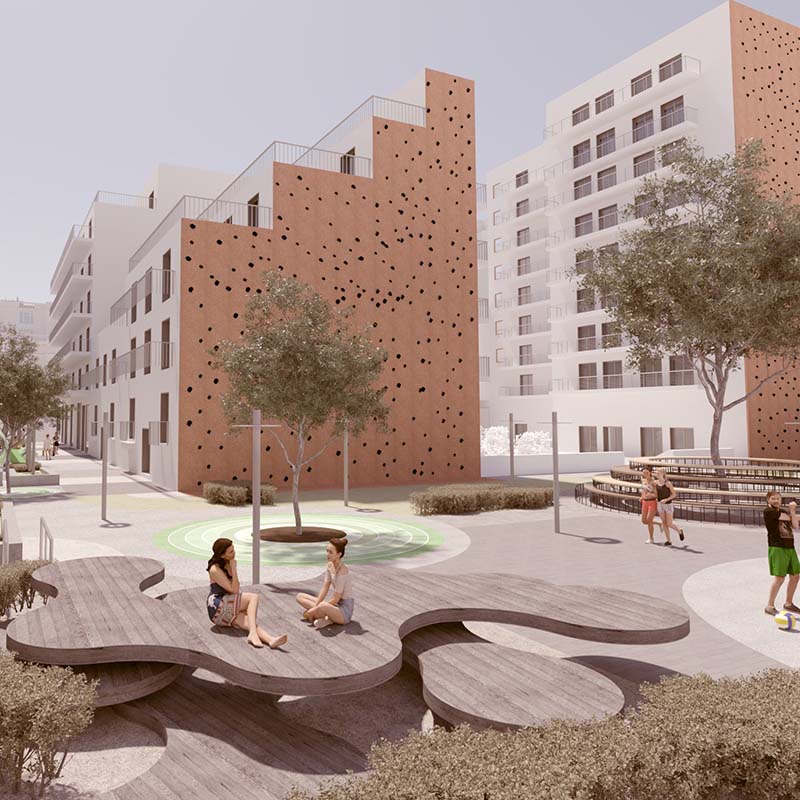

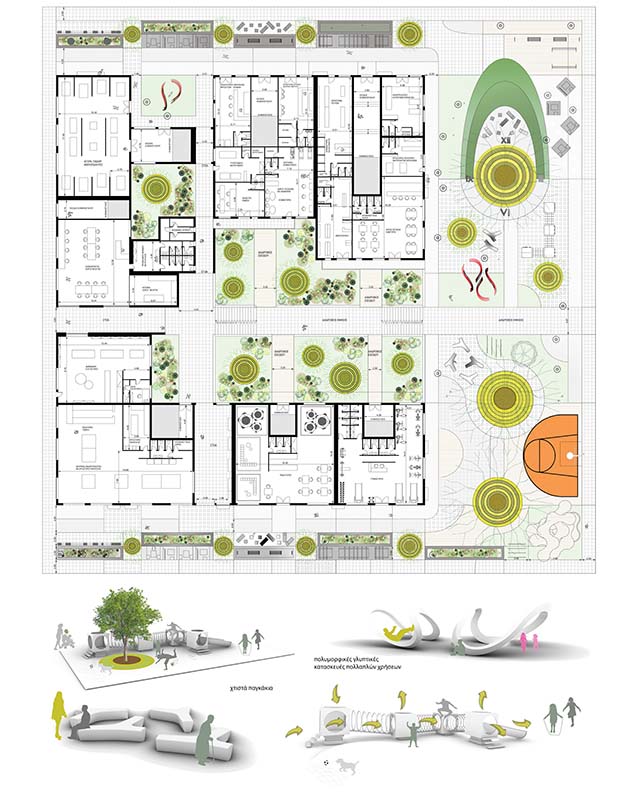

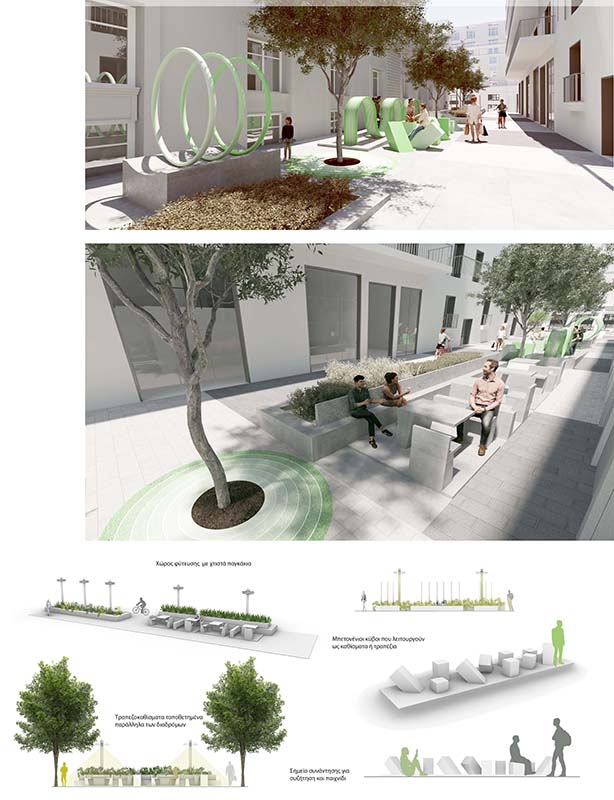

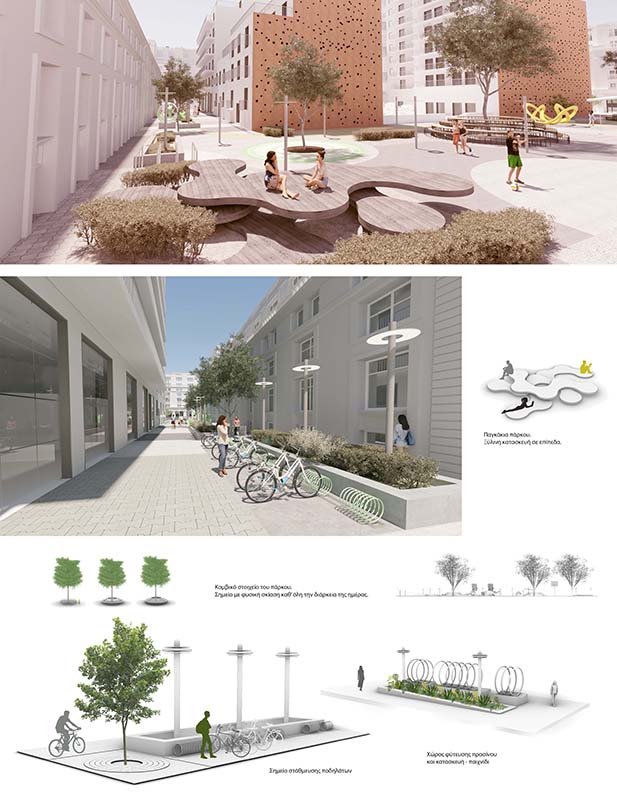

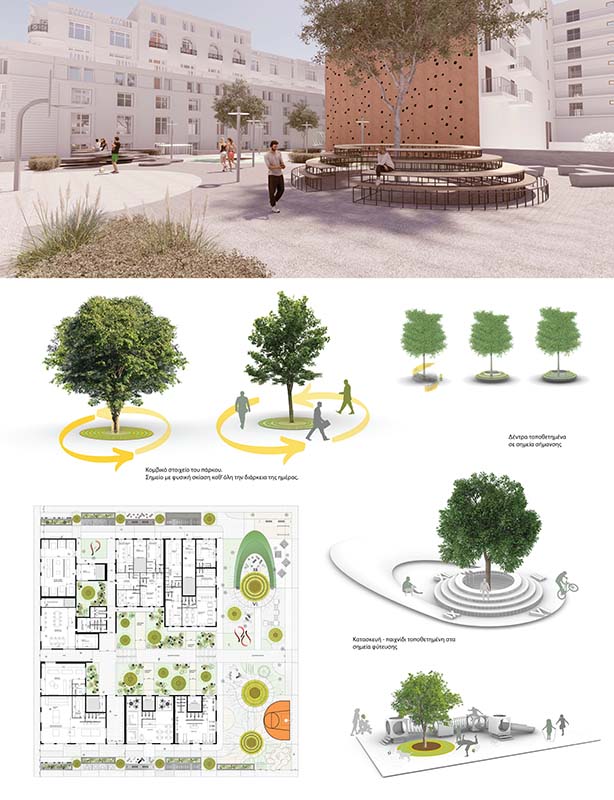

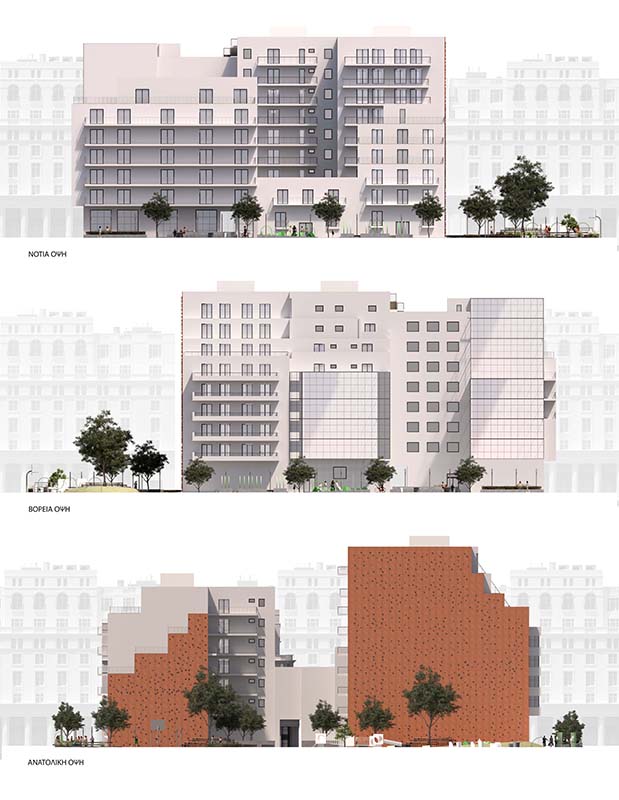

The objective of the current thesis is to reflect on the concept of the building block and to propose a possible solution that can support the modern needs for a happy collective life, needs that were especially magnified under the new demanding behavior conditions created by the pandemic. The approach aims at the re-invention-investment of space and time in the typology of the urban block "as we know it" with an emphasis on the strong communication of the private with the public space, the "inside" with the "outside" ("inside- out”). The "inside" enters the "outside" but also the "outside" enters the "inside" in a continuous two-way conversation between them.
The physical-political boundaries of the building (property, fences) are being weakened-withdrawn and the "inside" is connected and integrated with the "outside". Spaces are transformed into fields of transition that utilize light, solar energy, natural ventilation and the new proposals of "green" urban practices. The semi-outdoor collective living spaces reveal themselves to the city and shape new social possibilities for both permanent residents and visitors who can now not only communicate more but also effectively combine their lives. The new conditions of social distancing that have prevailed in the last two years make it crucial to revisit social obligations/reconnections. The "inside-out" approach-study will act as a transformer of social relationships, improve the quality of collective life and enhance the satisfaction feeling of the residents. The architectural solution, along with the re-shaping of social relationships, will satisfy aesthetic criteria, preserve the "buildings’ memory" and promote sustainability, driving a complete upgrade of the building block experience for both residents and visitors. The whole approach bears elements of the Swedish manifesto of modern architecture, Acceptera, where contemporary social conditions are recognized, accepted and lead to functional solutions to meet particular cultural and material needs.
The application field of the current study was an existing building block in the dense urban fabric of the central sector of Athens with challenges, faced also by other large city areas. The aging building infrastructure, the lack of green spaces, the lack of available free spaces for interventions, the socio-economic composition of the population (immigrants, the elderly, weaker economic strata) and the needs of the residents constitute the new reality of the area.
The study could be viewed as a pilot example for a larger scale solution that will replicate the logic and practices of the proposed design.
Supervisor: Stylidis Iordanis
Reference Number: 968

